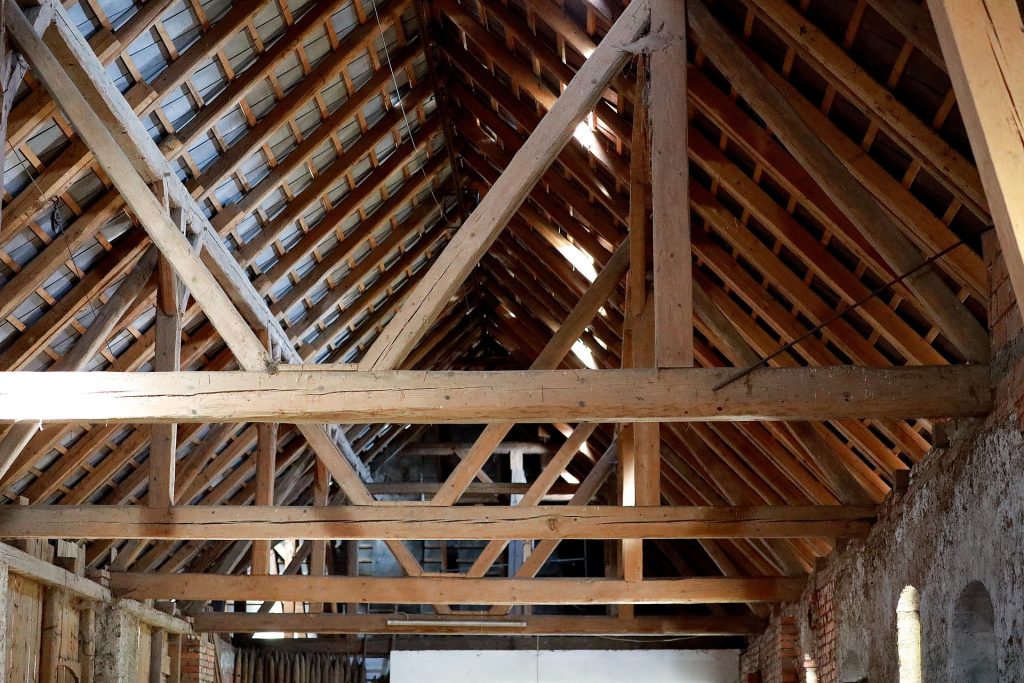

Insulation is a type of material typically installed in walls, floors, and roofs to prevent heat transfer. This may not seem necessary in our hot and humid climate, but having a well-insulated property also plays a key role in maintaining stable temperatures more effectively, helping to keep your home cool and comfortable all year round.
Good roof and ceiling insulation can therefore drive down your energy usage and save you significant amounts of money on bills and repairs in the long run.
To help you navigate the variety of insulation types available, here’s exactly what to look out for when choosing an effective thermal barrier for your roof, including R-value and material choices.
Why is Roof Insulation Important?
If your living space gets uncomfortably hot during the summer, yet freezing cold throughout the winter months, it’s likely that your home is under-insulated. Stopping heat from escaping through the walls and roof is key to tackling these issues, while also providing the following benefits:
- Improved Energy Efficiency: Installing effective insulation should lower your energy use, since your home will require less power to maintain a comfortable temperature. You also won’t need to use mechanical heating or cooling systems as frequently, which significantly reduces your electricity costs.
- Enhances Comfort: Roof insulation regulates indoor temperatures better, so you’re less likely to feel freezing during winter or uncomfortably hot throughout the summer. Good home insulation also absorbs unwanted sounds coming from outside, therefore creating a quieter, more relaxing living space.
- Prevents Mould Growth: Ever noticed damp patches on the ceiling? This comes from moisture infiltrating the roof, which causes mildew and mould growth. However, good insulation offers condensation control properties to stop rain from entering the roof. This ensures that your home maintains strong structural integrity, requiring fewer repairs and lasting longer without needing to be replaced.

What to Consider When Choosing Roof Insulation Types
The three key factors you’ll need to consider when it comes to effective roof insulation techniques are:
1. Insulation Type
When it comes to selecting roof insulation, you’ll notice two main types available here in Australia: bulk and reflective.
Bulk insulation includes batts and rolls, which use small trapped air pockets to resist heat transfer. This is often the best choice for reducing heat flow between objects that are positioned adjacent to each other, helping your home maintain constant temperatures by stopping heat from entering or escaping.
Reflective insulation is ideal for warm climates where you’ll want to reflect radiant heat away from your home. This roof insulation type is typically made from a foil layer with a paper or plastic backing.
2. Material
Within each category of insulation also comes various roof materials for you to choose from. For instance, the following two materials are different types of bulk insulation:
- Polyester: This synthetic fabric has an excellent thermal barrier, making it an ideal choice for temperature regulation. As a form of acoustic insulation, it also offers great noise-cancelling properties. Polyester is highly hypoallergenic because it doesn’t contain any breathable fibres, which is good for those with asthma or dust allergies.
- Glasswool: The more eco-friendly option is glasswool, which is produced from recycled glass material. This makes it affordable and ideal for homeowners looking to lower their carbon footprint. Glasswool is also completely non-combustible so it won’t catch fire and dissolves if ingested by children or pets, providing additional peace of mind for parents.
Aluminium foil is the main type of material used in reflective insulation as it effectively creates a radiant barrier against heat from the sun.
3. R-Value
The R-value of a material is a measure of its resistance to heat flow, which indicates how effectively it can provide thermal insulation for your home. Look out for materials with a higher R-value, as this translates to greater energy and money savings.
High R-value materials are also much better for the environment and help to reduce greenhouse gas emissions. This is because you’ll need to use mechanical heating and cooling systems, such as air conditioning units, less frequently.
The Building Code of Australia sets guidelines for the minimum R-values that you should choose depending on the specific area in which you live.
For instance, cooler climates such as Adelaide, Sydney, and Melbourne should select roof insulation with a value of at least R5.0, while a minimum of R4.0 is recommended for warmer regions like Perth and Brisbane.

Pairing Roof Insulation with Ventilation
Good roof ventilation works as a sidekick to insulation, ensuring that heat can flow efficiently around your roof space through soffit vents and ridges.
Ventilation also helps your roof insulation maintain its performance in regulating temperatures, while stopping moisture build-up and improving energy efficiency.
What’s great about choosing a dry fixed roofing system like RapidRidge is that it also incorporates ventilation, which facilitates natural cooling across the entire roof. This reduces heat transfer through the ceiling, making it the perfect partner for your roof insulation.
Like effective insulation, installing RapidRidge onto the eaves has also been shown to prolong the life of your roof and lower energy bills by up to 43%.
Ensure both effective roof insulation and ventilation by investing in RapidRidge’s dry fixed system to keep your roofing protected from extreme weather conditions. Check out the RapidRidge website for more information today.
